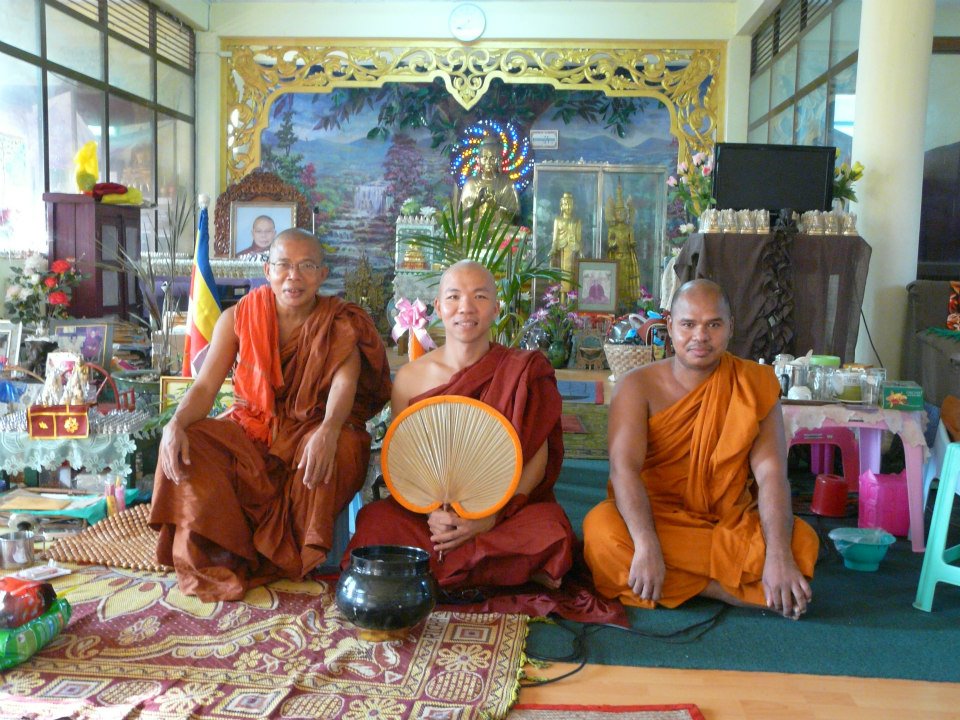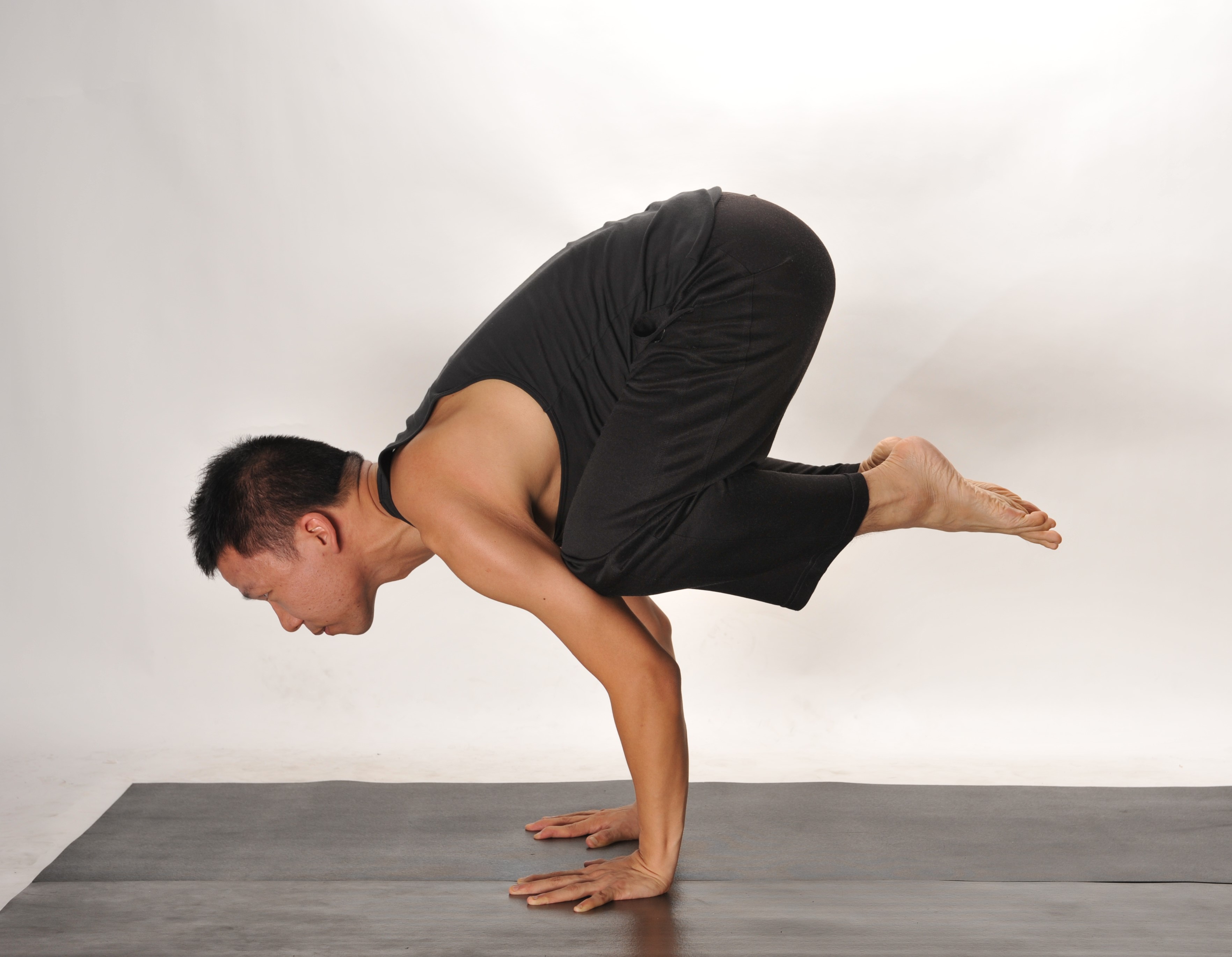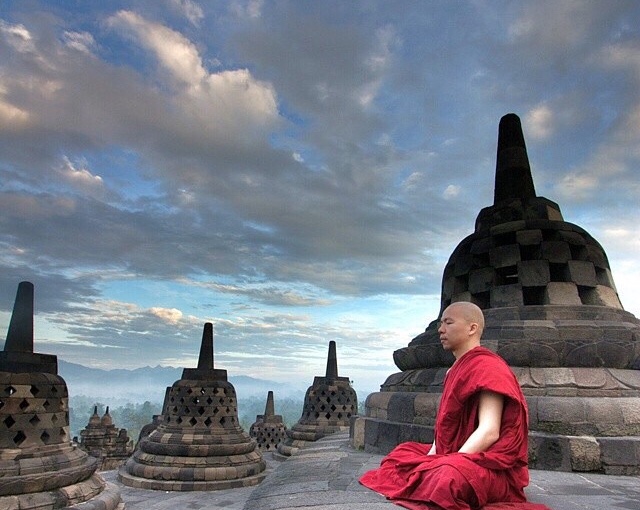Simon Hui is founder of Mindful Studio HK, a yoga studio offering courses to seekers of physical, mental, and spiritual wellbeing.
Try imagining someone born in Hong Kong who grew up in Nigeria, was educated in the US, learned yoga in India, and ordained as a monk in Myanmar. That is my continuously unfolding adventure, and I embrace whatever is to come on my plate next.
My story begins in Nigeria, West African country that might seem remote to most. My father had traded in the textiles business here since the 70s, and since the electricity supply was unstable, my childhood memories include happy, idyllic ones like surveying the endless horizon of the great Savannah at sunset, or gazing at the stars from the hood of my father’s car in the evenings. I really enjoyed just being with nature. I could look at the constellations for hours on end, watch sandstorms and thunderstorms developing at a distance, or simply be in awe of the majestic beauty of the universe.
Just before the age of 10, I returned to Hong Kong to learn my mother tongue. It would be quite unacceptable (to my parents) if I could converse in Yoruba and Hausa, the local dialects of Nigeria, but not in Cantonese. A few years later I relocated to Chicago to complete high school, and was eventually enrolled in Cornell University. I majored in Civil Engineering and soon joined the management ranks of international conglomerates. In my suit and tie I was considered by most to be a typical embodiment of stability and success. But just when life seemed to settle in, I stumbled upon my first yoga class when I was 29.
At the time yoga was still very new to Hong Kong. One of my friends said it was fun and asked me to try. It was the type of yoga practiced in a heated room and it was absolute torture, especially during Hong Kong’s hot summers. But somehow after each class I felt so light and rejuvenated, and I decided to explore further. This ancient art soon changed my life. I became hooked, and even after my friends dropped out, I ventured on. Soon, I decided that I needed to learn from the source of yoga itself: India. As I knew little about the yoga scene in India (let alone the diverse culture of the country), I sought advice from my then teacher, who told me to check out a “guru of gurus,” Yogacharya Venkatesha, based in Mysore. I resigned from my job, bought a plane ticket, and left for India.

It was everything I hoped for. In addition to the intensive training sessions, I was exposed to Vipassana (insight meditation), which was never really emphasized in typical yoga jargon. Nevertheless, blended into this particular program was a daily sitting meditation practice. This first taste of meditation was tremendously challenging for me at the time. I had severe pains in my hips and knees while seated in a half-lotus posture. Even after a month of daily sittings, I was barely be able to sit still. The instructions to mindfully observe the arising and passing away of phenomena in the mind and body were simply too far-fetched. Despite the demanding schedule, I was determined to complete the course that allowed me to serve as a certified yoga instructor.
As if karma was inching me along, soon after my return to Hong Kong, I met someone who, upon learning of my interest in yoga and meditation, suggested that I join a 10-day retreat at Suan Mokh Forest Monastery in southern Thailand, which has been founded by Buddhadasa Bhikkhu. What my friend didn’t mention was that the bed at the retreat dormitory was made of concrete, the pillow of wood. No dinner was served, and the ground had thousands of mosquitoes. Daily practice consisted of alternating sessions of walking and sitting meditation, dotted by breaks, meals, and Dhamma talks. I felt as if I was on another planet. During the talks I didn’t know what the monks were speaking about: they mentioned the five aggregates a lot, also the hindrances and sometimes Nibbana. But frankly I phased out half of the time.
As readers who have attended any retreat can attest to, for a novice, 10-day silent retreats are mentally and physically challenging. But those who dare to push beyond their comfort zones into the unknown will perhaps be rewarded with the priceless knowledge of the Dhamma.
I continued my spiritual search and successively attended more yoga courses and meditation retreats, and pursued a Master of Buddhist Studies degree at The University of Hong Kong. The pivotal moment was when I ordained in Myanmar as a bhikkhu in the Theravada tradition, between 2012-14. As a bona fide member of the sangha, I also began to share what I knew via Dhamma talks and attended Buddhist conferences in the region. I also continued my personal practice and sometimes stayed for months at meditation centres in Myanmar under the lineage of Chanmyay Sayadaw. At long last, I had gained considerable exposure to yoga and Buddhism, both academically and experientially.

Since 2014 I disrobed and returned to Hong Kong to take care of my parents. I had another stint in the corporate world, but now I am ready to take the next step of my spiritual journey and serve spiritual seekers and those grappling with the problems of the human condition. Based on my extensive experience of yoga and meditation, along with a solid foundation of teaching, I established Mindful Studio HK, offering tailored sessions for practitioners to explore themselves.
I sincerely believe that society is at a point where generosity and kindness, something so core to our innate human nature, has been severely diluted by the poisons of greed and aversion. Through Mindful Studio HK, I hope to share with my students the benefits of yoga and meditation, which help build a life of love and compassion for themselves and for others.
See more


Thanks for this. It’s interesting to read about the different ways in which people come to the Buddha-Dharma and make it part of their lives.